Bogotá , Colombia
December 24-31
We spent a week in Bogotá, almost all of that time in the town's colonial La Candelaria section, a neighborhood of narrow, cobblestone streets and fading, low red tile-roofed buildings. With most of the town's attractions closed, we spent the Monday after Christmas in our hostel, catching up on our journals.
Over the next few days, Holly and I quickly fell in love with Bogotá as the best capital city that we had visited so far. The town had a fascinating diversity. Even the low and antique La Candelaria skyline was punctuated by the occasional modern high-rise building. The people we encountered were friendly and helpful, varying from street vendors in traditional indigenous garb to teenagers dressed like Manhattan hipsters.
For the first time on our journey, the armed presence on the streets made us feel more, rather than less secure. We walked through neighborhoods under the watchful eye of clean-cut, smartly dressed soldiers, who held their rifles like professionals, with muzzles pointed in a safe direction and yellow plugs protruding from the actions to show that there wasn't a round loaded in the chamber.
Colombia 's reputation had been a concern, for both us and our families, as we planned our trip, with close friends who had lived there urging us to avoid the entire country. Many motorcyclists traveling the Pan-American bypass Colombia , flying directly from Panama City directly to Quito , Ecuador . Our guidebook described a nation stuck in the mire of a four-decade old civil war, where guerilla armies and independent paramilitary forces waged bloody battles for nearly half of the countryside. Bogotá was the center of this conflict, with guerillas inflicting terror on the streets by making kidnapping and car bombing a fact of daily life. We took all of these factors into consideration when planning our route, but we judged the opportunity to explore the mysterious, diverse and potentially dangerous nation of Colombia outweighed the risks.
The Colombia that we encountered was a pleasant surprise. We felt secure and safe at all times, even walking the streets at night. We tried to be smart, not taking Holly's camera out after dark and avoided driving on the roads at night. Our guidebook described the Colombian attitude towards safety, ingrained after years of violence, as a “siege” mentality and the confidence with which we walked the streets left us feeling slightly arrogant and possibly ignorant.
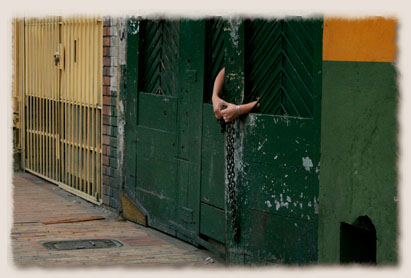
| |
Hands reach out of a gate to snap closed a lock and chain. |
On Tuesday, we traveled to Bogotá's premier attraction, Monserrate, the mountain peak that towers over the town center. A walking path leads to the summit, but soldiers near the base urged us against taking it for our safety. Our upward trip was provided by a funicular rail car, the 60 degree ascent that climbs 3,000 feet ending in a concrete tunnel station. A short walk up stairs from the station, along a pathway lined with bronze statues of the Passion of Christ, took us to the church that dominates the summit. Looking out from the church steps we could see the sprawling city of Bogotá , the La Candelaria district a red tile patch in a gray mass that spread throughout the Andean valley until it disappeared in the smog. We made the return trip in a cable car that scrapped the tops of pine trees as it took us back down to the city.
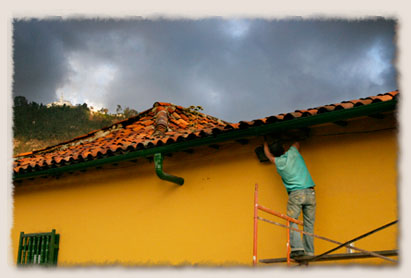
| |
A painter reaches under the eaves of a building as the Cerro de Monserrate looms high above in a break in the clouds. |
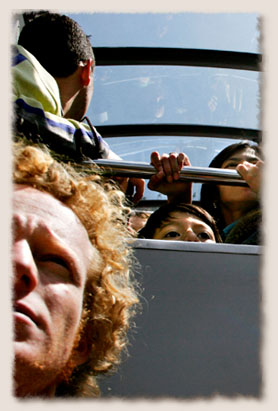
| |
We were taken up the steep grade to Cerro de Monserrate in a small funicular rail car. |
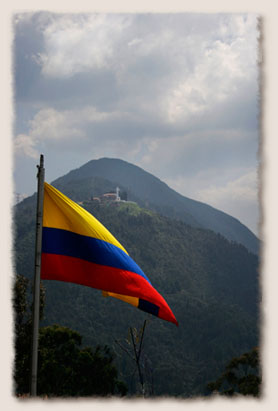
| |
The Colombian flag flies from the top of Monserrate. |
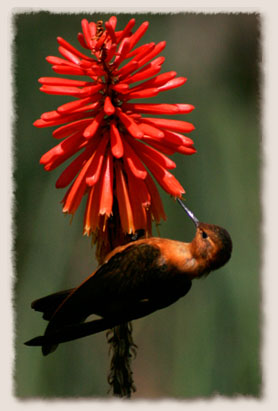
| |
A bird that resembled a hummingbird, but didn't have the wing speed of one, sipped nectar from flowers at Monserrate. |
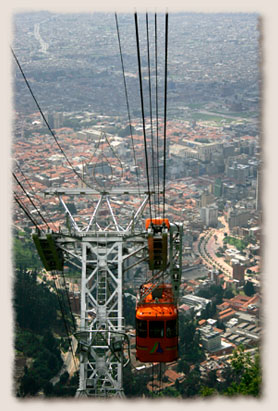
| |
The teleferico or cable car heads both ways from the summit giving a beautiful view of Bogotá. |
We found Bogotá's museums to be the best we had visited so far. The famous Museo del Oro houses an impressive and well-displayed collection of pre-Colombian gold artifacts. The city is also home to the 200-piece art collection of Colombia 's most famous artist Fernando Botero. The collection is dominated by paintings and sculptures that feature the plump and rounded figures and objects that denote Botero's style, with the remaining pieces coming from artists like Picasso, Dali, Renoir, Matisse and Monet. The Botero museum is housed in a complex of colonial buildings that include a minting museum, a collection of both colonial and contemporary Colombian artists and a gallery of international modern art.
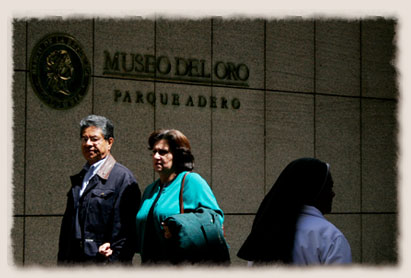
| |
The Gold Museum was crowded after Christmas, with many Colombians having the week between Christmas and New Year's free from work. |
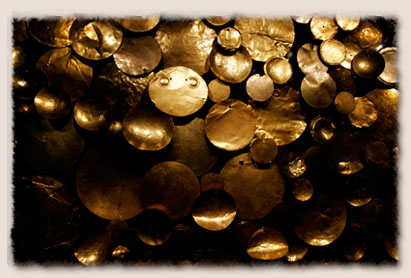
| |
El Museo del Oro or Gold Museum was mostly a collection of pre-Colombian gold artifacts. |
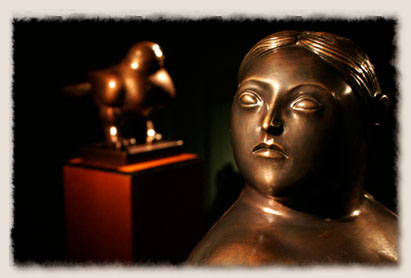
| |
We went to the Fernando Botero museum which housed many of the Colombian artist's sculptures and paintings. |
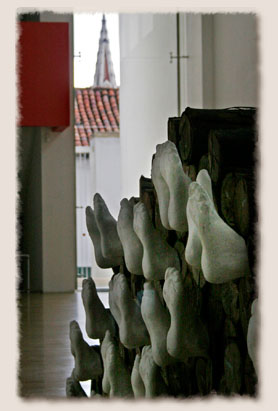
| |
Several other modern art museums surrounded the Botero museum. Photo by Jeremiah. |
The weather in Bogotá was perfect for our holiday visit, with days that were warm and nights that were cool enough that you could see your breath. We would spend nearly a week there before our motorcycle arrived. Our hostel's kitchen gave us an excuse to grocery shop, and we cooked nearly every meal, a welcomed break from two month's worth of restaurant fare. We spent our time working, relaxing and enjoying a city that offers so much under its tough exterior.
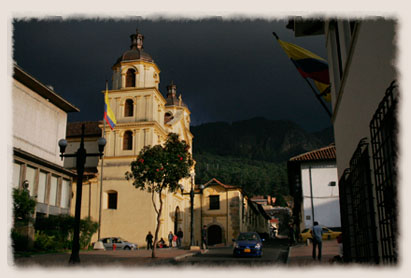
| |
Almost everyday dark clouds swarmed the city, threatening a small shower or downpour but quickly dissipated to allow the sun to dry things out. |
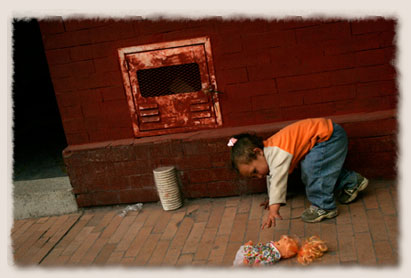
| |
A child reaches for her doll along Avenida Jimenez. |

| |
Artistic stencils covered many walls around the city. |

| |
Around the Plaza de Bolivar kids were chasing and feeding pigeons and many people were out enjoying the holidays. |
|
|